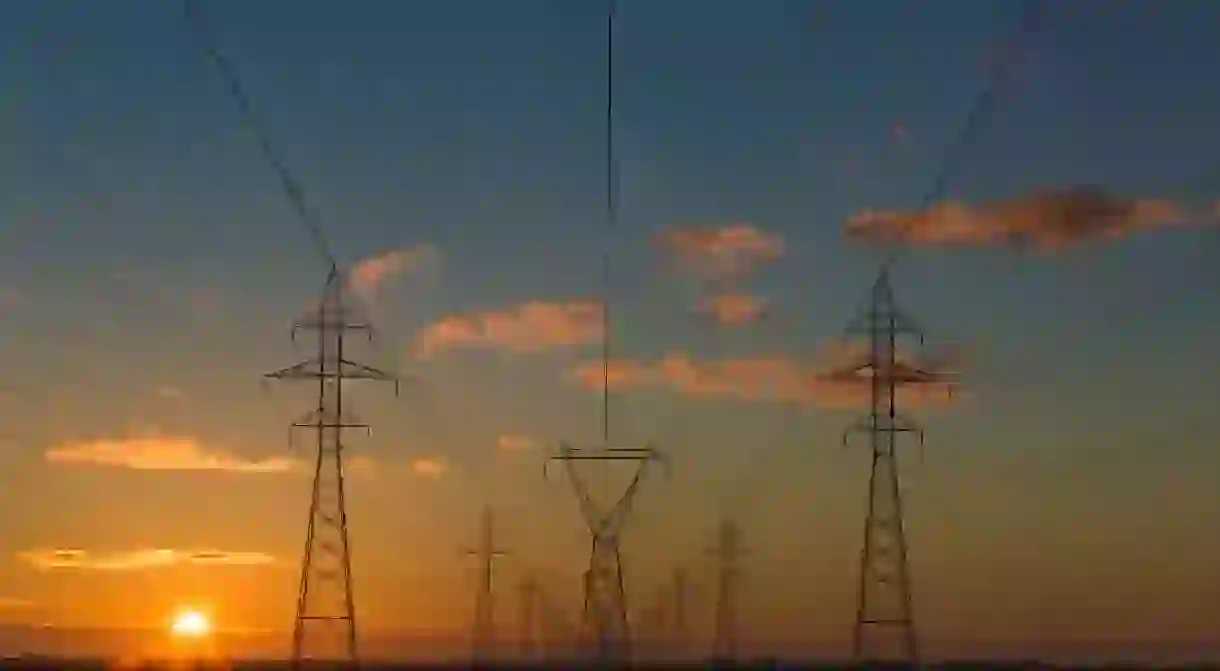Load Shedding: What Is It and Why Is It Affecting South Africa?

The term ‘load shedding’ is right up there with South African slang like ‘bakkie’, ‘braai’ and ‘robot’ when it comes to eliciting strange looks from travellers. But what is it and why is it affecting South Africa? Unfortunately, unlike trucks (bakkies), barbecues (braais) and traffic lights (robots), load shedding is more likely to negatively affect your trip to South Africa. That’s because the term is little more than a euphemism for the country’s ongoing grapples with erratically-scheduled and unpredictable, nationwide rolling electricity blackouts.
Did you know you can now travel with Culture Trip? Book now and join one of our premium small-group tours to discover the world like never before.
Blackouts started in 2007
The term ‘load shedding’ first started dominating the South African lexicon in 2007, when the country’s national electricity utility, Eskom, announced that it was unable to supply power to the entire country at the same time.
As a result, they announced they would need to implement a blackout schedule – that they dubbed ‘load shedding’ – in order to prevent the entire power grid from collapsing.
The hastily-organised plan to reduce the load on the country’s power grid was met with confusion, disorganisation, disdain, and an unusual sense of unity as the population rallied against a shared hatred.
At the time, experts warned that the country’s economy could suffer significantly due to the rolling blackouts, and Eskom announced that the blackouts would remain for at least the next “five to seven years”.

Poor management, incompetence, or corruption?
Many blamed poor management and incompetence within the organisation, although recent revelations suggest that it was primarily due to corruption and a massive ‘get-rich scheme’.
Still, the country rallied – citizens who could afford them bought generators and gas stoves, most learnt to go back to the days of reading by candlelight or making polite conversation in front of blank televisions, and most heeded the government’s urgent calls – often during prime time news bulletins – to reduce power usage.
South Africa eventually emerged from the often two-hour, twice-daily blackouts, and managed to stage a successful football World Cup in spite of the electrical supply doomsayers. And for a few years, many thought the dark days of rolling power cuts were a thing of the past.
But just as load shedding was starting to fade from dinnertime conversations, it was catapulted back into national headlines. In 2012, Eskom announced that the likelihood of fresh power cuts was “very high“, and would likely remain as such until at least 2017.

Power cuts here to stay
Fast-forward to 2019, well outside all of the initial predictions, and the country once again sits in a dire situation when it comes to nationwide electrical supply.
Much like those affected by Cape Town’s water crisis, many residents are now in a position to be at least somewhat self-sustainable for the periodic electricity-free life that hits the country several times a week.
Many commercial operations have installed automatic generators that kick in at the first indication of a power cut, and smaller home businesses rely on battery power and universal power supplies to keep their electronics running without relying on the grid.
The impact of load shedding is more than just a minor inconvenience, though. Experts warn that the blackouts will cost the country millions, and that there is now no real indication as to when the problem will be resolved.
What this means for you
Although residents are now well-versed on how to handle the blackouts, many visitors to South Africa are left confused by the concept and how it will affect them.
Unlike the early days of load shedding, most cities now have plans in place to alert residents of imminent power cuts and load shedding schedules – although these are often confusing and not adhered to.
Load shedding typically occurs in two-hour blocks, and at its worst this will likely be twice daily. If you’re staying in a hotel, staff there should be aware of the schedule and be able to inform you accordingly.
Alternatively, you can also check the latest status on the Eskom website, or your local city’s social media pages.
Fortunately, as a visitor to South Africa, it’s unlikely your day-to-day activities will be significantly impacted, and load shedding is no reason to cancel a holiday to the country.
Most businesses in the tourism industry, from restaurants and hotels to shopping malls and wine estates, have measures in place to counteract the impact of the power cuts, to the point that you may not even notice the disruption.

The same goes for hospitals and other essential services – all have contingency plans in place and many national key points are excluded from the cuts altogether.
The one factor that visitors, residents and business can’t ignore, however, is traffic. If you need catch a flight in the upcoming days, it may be prudent to check the load shedding schedules to ensure you avoid the inevitable traffic the blackouts will cause.
Still, certain power-hungry businesses like malls and restaurants might need to cease operation for a few hours while you’re in the country, in which case you will have little option but to unplug for a few hours and head outdoors. But, as a visitor to South Africa, that is not a particularly bad prospect in itself.













